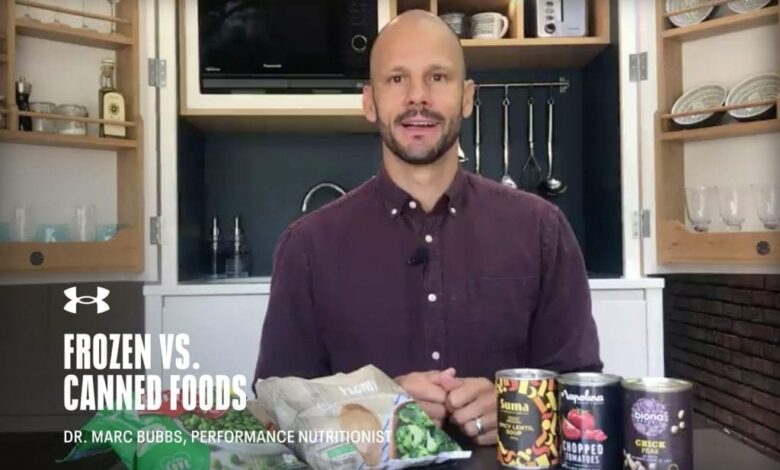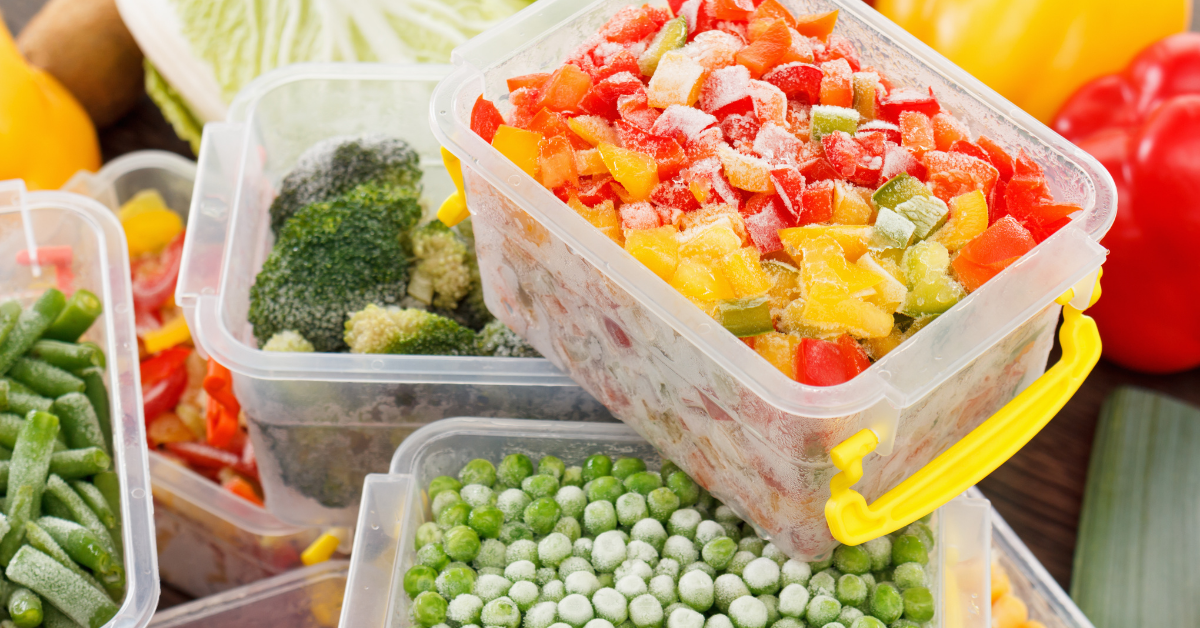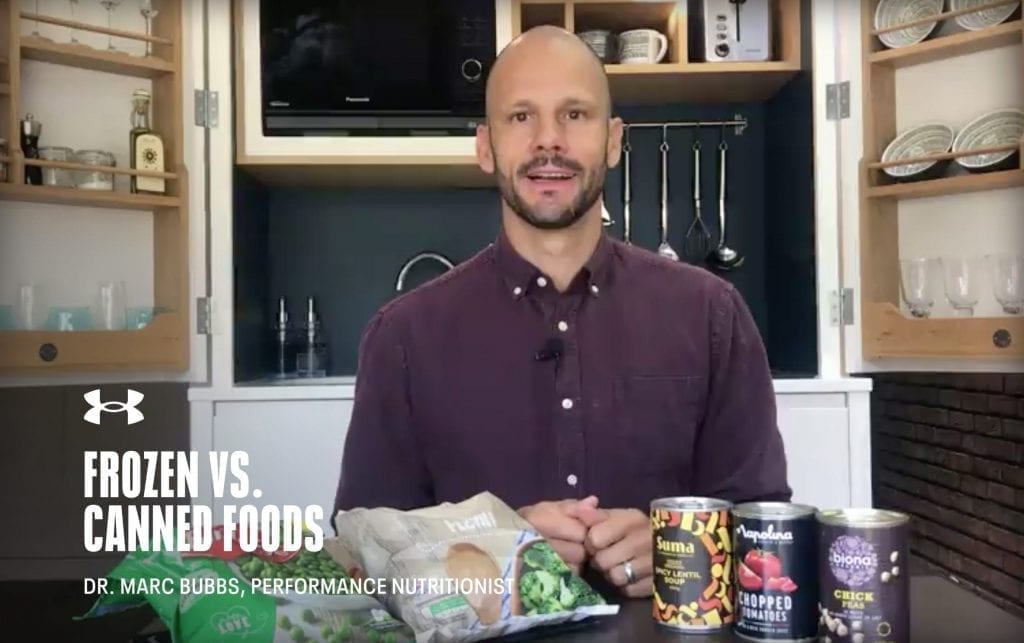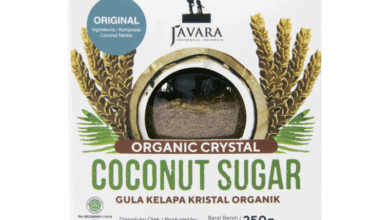
Canned or Frozen: Which Is Healthier?
Whats healthier canned or frozen foods – Canned or frozen: which is healthier? It’s a question that’s sparked endless debate among health-conscious individuals. Many believe canned foods are laden with preservatives and lose their nutritional value, while frozen foods are seen as a healthier option. But is this truly the case?
To answer this question, we need to delve into the science behind both processing methods, considering factors like nutrient retention, shelf life, and environmental impact.
This post will break down the key differences between canned and frozen foods, providing you with the information you need to make informed choices about what’s best for your health and the environment.
Nutritional Content Comparison

When deciding between canned and frozen fruits and vegetables, understanding their nutritional content is crucial. Both options offer convenience and can be part of a healthy diet, but their processing methods can affect nutrient levels.
Nutrient Loss During Processing
The processing methods used for canned and frozen foods can impact their nutritional content.
- Canned Foods:Canned fruits and vegetables are often heated at high temperatures for extended periods, which can lead to the loss of some vitamins, particularly water-soluble vitamins like vitamin C and thiamin. Additionally, the canning process can cause some minerals, like potassium, to leach into the canning liquid.
- Frozen Foods:Freezing itself generally preserves most nutrients, but blanching, a process used to prepare vegetables for freezing, involves a quick dip in boiling water. This can lead to a small loss of some water-soluble vitamins. However, freezing generally retains more nutrients compared to canning.
Preservatives and Additives
Both canned and frozen foods often contain preservatives and additives to extend their shelf life and maintain quality.
- Canned Foods:Canned foods often contain added salt, sugar, and preservatives like sodium benzoate and sulfites. These additives can increase sodium content and contribute to added sugars in the diet.
- Frozen Foods:Frozen foods generally contain fewer additives compared to canned foods. However, some frozen products may contain preservatives like ascorbic acid (vitamin C) and citric acid to maintain color and prevent oxidation.
Impact of Preservatives and Additives
Preservatives and additives can impact health in various ways:
- Sodium:High sodium intake can contribute to high blood pressure and other health problems.
- Added Sugars:Excessive sugar intake can lead to weight gain, type 2 diabetes, and other health issues.
- Preservatives:Some individuals may experience allergic reactions or sensitivities to certain preservatives, such as sulfites.
Processing Methods and Impact: Whats Healthier Canned Or Frozen Foods
Understanding how canned and frozen foods are processed is crucial to evaluating their nutritional value and overall quality. Both methods involve specific steps that affect the food’s texture, flavor, and nutrient content.
Canning Process and Its Effects
Canning involves sealing food in airtight containers and heating them to a high temperature to kill harmful bacteria and prevent spoilage. The heat used in canning can affect the food’s texture and nutritional value.
When it comes to canned vs. frozen, there’s no clear-cut winner – it depends on the specific food and how it’s processed. To get the best advice on making informed food choices, you might want to consult a registered dietitian.
If you’re unsure about the difference between a nutritionist and a registered dietitian, check out this article: ask the rd whats the difference between a nutritionist and registered dietitian. Ultimately, the healthiest option is the one you’ll actually eat and enjoy, so choose what works best for you and your lifestyle.
- Texture Changes:Canned foods often have a softer texture than their fresh counterparts due to the heat breaking down cell walls. For example, canned fruits may become mushy, and canned vegetables may lose their crispness.
- Nutrient Loss:Heat can degrade certain vitamins and minerals, leading to some nutrient loss in canned foods. Water-soluble vitamins like vitamin C and B vitamins are particularly susceptible to degradation during canning.
- Preservation of Nutrients:While some nutrients are lost, canning effectively preserves other nutrients, such as fat-soluble vitamins (A, D, E, and K) and minerals. The airtight containers also prevent oxidation, which can degrade nutrients.
Freezing Process and Its Impact
Freezing involves rapidly lowering the temperature of food to below its freezing point, halting the growth of microorganisms and slowing down enzymatic activity.
- Texture Changes:Freezing can affect the texture of foods, particularly fruits and vegetables. The formation of ice crystals can cause cell damage, leading to changes in texture upon thawing. For example, frozen berries may become mushy when thawed.
- Flavor Retention:Freezing generally preserves flavor better than canning. However, some foods may experience a slight loss of flavor due to the formation of ice crystals.
- Nutrient Retention:Freezing is generally considered a more nutrient-preserving method than canning. It preserves most vitamins and minerals, particularly water-soluble vitamins, as the freezing process does not involve high heat.
Microbial Growth and Spoilage
Canning and freezing both effectively inhibit microbial growth and spoilage, but they differ in their mechanisms.
- Canning:The high heat used in canning kills most microorganisms, making canned foods shelf-stable at room temperature. The airtight containers also prevent the entry of new microorganisms.
- Freezing:Freezing slows down the growth of microorganisms by reducing their metabolic activity. However, freezing does not kill all microorganisms. Therefore, frozen foods must be stored at temperatures below 0°C (32°F) to prevent spoilage.
Shelf Life and Storage
The ability to store food for extended periods is a significant advantage of both canned and frozen foods. Understanding the shelf life and storage requirements of each type can help you make informed decisions about your food choices and ensure optimal quality.
Shelf Life of Canned Foods
Canned foods are known for their remarkable shelf life, often lasting for several years. This extended shelf life is attributed to the canning process, which involves heating the food to a high temperature to kill bacteria and seal it in an airtight container.
- Unopened canned foodstypically have a shelf life of 1 to 5 years, depending on the type of food and the storage conditions.
- Opened canned foodsshould be refrigerated and consumed within 3 to 5 days.
Storage Requirements for Canned Foods
- Store canned foods in a cool, dry place, away from direct sunlight and heat. This helps prevent spoilage and maintain the quality of the food.
- Avoid storing canned foods in extremely hot or cold environments, as this can affect their shelf life and potentially compromise their safety.
- Inspect canned goods for any signs of damage, such as dents, rust, or leaks, before storing or consuming them. Damaged cans may have compromised their seal, increasing the risk of spoilage or contamination.
Shelf Life of Frozen Foods
Frozen foods, while not as long-lasting as canned foods, can still have a considerable shelf life, particularly when stored correctly. The freezing process slows down the growth of bacteria and enzymes, preserving the food’s quality.
- Frozen fruits and vegetablestypically have a shelf life of 6 to 12 months.
- Frozen meats and poultrygenerally have a shelf life of 6 to 12 months, while frozen seafood can last for 3 to 6 months.
- Frozen ready-to-eat mealscan last for 2 to 3 months, depending on the ingredients and preparation methods.
Storage Requirements for Frozen Foods
- Store frozen foods in a freezer set at 0°F (-18°C) or below. This ensures that the food remains frozen and prevents the growth of bacteria.
- Wrap frozen foods tightly in freezer-safe packagingto prevent freezer burn. This helps to prevent moisture loss and maintain the quality of the food.
- Avoid overpacking the freezer, as this can impede airflow and affect the freezing temperature.
- Thaw frozen foods in the refrigerator, not at room temperature. This helps to prevent bacterial growth and maintain the food’s quality.
Freezer Burn
Freezer burn is a condition that occurs when frozen food is exposed to air, causing moisture loss and a change in texture and flavor. It is characterized by a whitish, dry, and leathery appearance on the surface of the food.
- Freezer burn can affect the quality of frozen foods, making them dry, tough, and less flavorful.
- While freezer burn does not necessarily make food unsafe to eat, it can significantly impact its taste and texture.
- To prevent freezer burn, wrap frozen foods tightly in freezer-safe packaging, avoid overpacking the freezer, and thaw foods in the refrigerator.
Environmental Considerations
The environmental impact of food production is a significant concern, and choosing between canned and frozen foods can be a crucial decision. Understanding the environmental footprint of each option, including resource consumption, waste generation, packaging materials, and transportation, can guide consumers towards more sustainable choices.
So, you’re wondering about canned vs. frozen – which is healthier? It’s a good question, especially since we’re always bombarded with claims about “superfoods” and their magical health benefits. But are those claims really justified? It’s worth exploring the actual science behind these superfoods, and whether they truly live up to the hype.
You can read more about that in this article on how super are superfoods really. Ultimately, when choosing between canned and frozen, it’s important to consider the specific nutrient content and processing methods for each product, and prioritize options with minimal added sugar and sodium.
Resource Consumption and Waste Generation
The production of canned and frozen foods involves different resource requirements and waste generation.
- Canned foods require significant energy for the canning process, which involves heating and sterilizing the food. This process often relies on fossil fuels, contributing to greenhouse gas emissions. Additionally, the metal used in cans is a finite resource, and its extraction and processing have environmental implications.
- Frozen foods, on the other hand, require energy for freezing and storing the food at low temperatures. This energy consumption can be substantial, particularly if not derived from renewable sources. However, freezing can preserve food for longer periods, reducing food waste and the need for frequent re-harvesting, which has a positive environmental impact.
Packaging Materials
The packaging used for canned and frozen foods also contributes to their environmental impact.
- Cans are typically made from aluminum, which is recyclable but can be energy-intensive to recycle. The use of BPA-free linings in cans is also a concern, as some studies suggest potential health risks associated with BPA.
- Frozen food packaging often involves plastic, which can be a significant source of pollution if not properly recycled. However, some manufacturers are transitioning to more sustainable packaging options, such as recyclable cardboard or compostable materials.
Carbon Footprint of Transportation and Distribution
The transportation and distribution of canned and frozen foods contribute to their overall carbon footprint.
- Canned foods are typically heavier than frozen foods, requiring more energy for transportation. This is especially true for long-distance transportation, where the impact of fuel consumption is more significant.
- Frozen foods require refrigerated transport, which increases energy consumption and emissions. However, advancements in transportation technology, such as fuel-efficient trucks and cold-chain management, are helping to reduce the environmental impact of frozen food distribution.
Cost and Convenience

When deciding between canned and frozen foods, cost and convenience play significant roles. Both options offer advantages and disadvantages, influencing your choices based on your budget and lifestyle.
Cost Comparison
Understanding the average cost of canned and frozen foods helps make informed decisions. Canned goods are often perceived as cheaper, but the difference in price can vary depending on the product and brand.
- Canned goods:Generally, canned fruits and vegetables are less expensive than their frozen counterparts. However, the price difference can be minimal for certain items, like canned tuna versus frozen fish.
- Frozen goods:Frozen foods tend to be pricier, particularly for pre-prepared meals and organic options. However, the price can fluctuate based on factors like seasonality and availability.
Convenience Factors
Both canned and frozen foods offer convenience, but their advantages differ in terms of preparation time and availability.
The debate over canned versus frozen foods often boils down to personal preference, but when it comes to nutrients, both can be healthy options. For a convenient and nutritious meal, try whipping up some baked veggie egg cups , which can be made with both canned and frozen vegetables.
The key is to choose options that are low in sodium and added sugar, and to make sure you’re getting a variety of nutrients from your diet.
- Canned goods:Canned foods are often ready to eat or require minimal preparation, like opening the can and draining the liquid. They are readily available in most grocery stores and have a longer shelf life than frozen foods.
- Frozen goods:Frozen foods typically require thawing and cooking, adding extra steps to meal preparation. However, they often come in pre-portioned sizes, reducing the need for measuring and chopping. Additionally, frozen foods offer a wider variety of options, including pre-prepared meals and seasonal produce.
Food Waste and Its Impact
Food waste is a significant concern for both canned and frozen foods. While both options contribute to food waste, the impact can vary.
- Canned goods:Canned goods have a longer shelf life, reducing the likelihood of spoilage. However, improper storage or neglecting to use them before the expiration date can lead to waste.
- Frozen goods:Frozen foods are more susceptible to freezer burn and spoilage if not stored properly. Additionally, forgetting about frozen items in the back of the freezer can result in waste.
It’s crucial to consider your household’s consumption patterns and storage practices when deciding between canned and frozen foods. Understanding the potential for food waste can help you make more sustainable choices.
Consumer Preferences and Health Considerations
While both canned and frozen foods offer convenience and longevity, consumer preferences often hinge on factors like taste, texture, and ease of preparation. This section delves into common preferences for each category and explores potential health concerns associated with specific ingredients often found in canned foods.
Taste and Texture Preferences
The choice between canned and frozen foods often boils down to personal preferences regarding taste and texture.
- Canned foods, particularly fruits and vegetables, may have a softer texture due to the heat processing involved. Some consumers prefer this texture, while others find it less appealing compared to the firmer texture of frozen options.
- Frozen fruits and vegetables, on the other hand, often retain a crisper texture, closer to their fresh counterparts. This can be a significant factor for individuals who value the crunch and freshness of their food.
- Canned goods often have a distinct flavor profile, sometimes described as “metallic” or “tinny.” This can be attributed to the interaction between the food and the can’s lining. Frozen foods, in contrast, tend to retain a more natural flavor.
Sodium Content in Canned Foods
A significant concern with canned foods is their high sodium content. Manufacturers often add salt to enhance flavor and preserve the product.
High sodium intake can contribute to high blood pressure, which is a risk factor for heart disease and stroke.
While some canned goods are available with reduced sodium options, it’s crucial to check labels and choose lower-sodium varieties whenever possible.
Impact of Added Sugars and Preservatives, Whats healthier canned or frozen foods
Both canned and frozen foods can contain added sugars and preservatives to enhance flavor, texture, and shelf life.
- Excess sugar intake can contribute to weight gain, type 2 diabetes, and other health problems.
- Preservatives, while generally safe in moderate amounts, can have potential long-term health effects. Some preservatives, such as nitrates and nitrites, have been linked to an increased risk of certain cancers.
It’s essential to be mindful of these ingredients and choose products with minimal added sugars and preservatives.
Final Thoughts
Ultimately, the “healthier” option between canned and frozen foods depends on your individual needs and preferences. Both methods offer advantages and disadvantages, and the best choice may vary depending on the specific food item. By understanding the key factors involved, you can make informed decisions that align with your health goals and dietary needs.
So, the next time you’re faced with a choice between a can and a freezer bag, consider the information presented here to make a decision that’s right for you.






